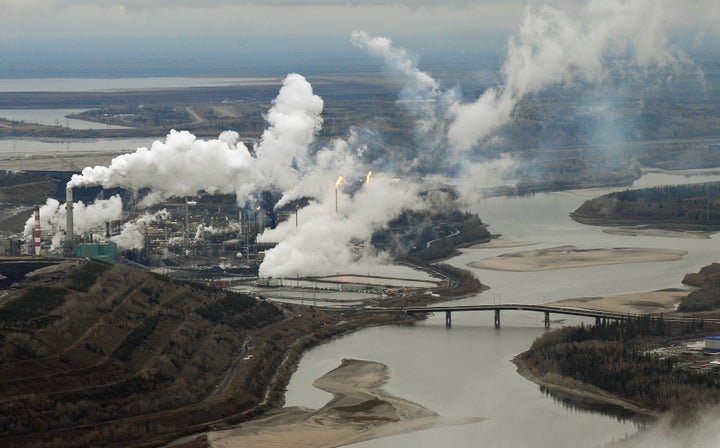Alberta Premier Jason Kenney has called on the federal government to expand aid to the oil and gas industry as the price of some Canadian oil products turned negative on Monday.
Oil analysts say a growing number of producers are willing to pay buyers to take oil off their hands due to a lack of storage space for unwanted product. This is particularly true of “landlocked” producers, such as those in Alberta’s oilsands and some producers in the U.S., who have limited access to global oil shipping routes.

World oil prices fell nearly 40 per cent at the start of the trading week, the largest one-day drop in modern history, according to Bloomberg.
West Texas Intermediate, the benchmark price for North American oil, fell to US$10.77 a barrel on Monday.
In a tweet late Sunday, Kenney shared a screenshot showing Western Canadian Select oil falling to minus-$0.01 per barrel.
However, as of Monday morning, Canadian oil prices appeared to be even lower, with finance blogs reporting that some Alberta oil was selling for as little as minus-$4.68 per barrel.
UPDATE 04/20/2020 4:30 pm ET: Some U.S. oil prices also fell into negative territory on Monday, amid serious market volatility. The futures contract for West Texas oil delivered in May fell as low as minus-$37.60 a barrel, as traders who previously committed to buying this oil scrambled to unload it, finding neither demand nor storage space. By comparison, the contract for June oil was at (plus) $20.90 per barrel.
The slide came after investors realized the oil production cut announced last week by OPEC and Russia would not be nearly enough to offset the massive drop in oil demand the world has experienced due to the COVID-19 shutdowns.
The OPEC deal will reduce oil production by 9.7 million barrels per day, or about 10 per cent.
But with flights cancelled and millions of people newly unemployed or working from home, consumption of oil-based fuels has collapsed, and demand for oil is down by 25-35 per cent.
Storage space is nearly full, Bloomberg reports, including at the terminal in Cushing, Okla., the destination for the planned Keystone XL pipeline.
For some, it’s cheaper to keep drilling
Analysts say it may be less costly for a producer to continue drilling oil and pay to have it removed than it would be to shut down and restart a complex oil extraction project, such as the oilsands mines in Canada or shale-oil operations in the U.S.
Prime Minister Justin Trudeau announced $2.5-billion worth of aid to the oil and gas industry on Friday, including $1.7 billion for cleanup of abandoned and orphaned oil wells.
In his tweets Sunday night, Kenney said the industry would need more help than that.
“Significantly more action is urgently needed to ensure a future for an enormous part of Canada’s economy,” he tweeted.
― With a file from Reuters and The Associated Press